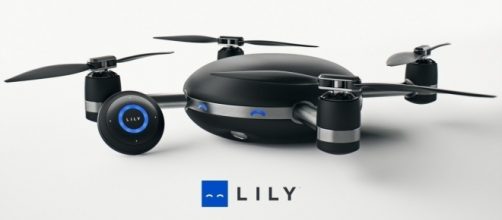The 2010s could well be the period when the use of remote-controlled Drones for recreational use became a fixture of life, maybe not of the “everyday life” level but very close. Professional photographers, news media, extreme sports enthusiasts and even outdoorsmen have together begun to form a significant market for drone manufacturers to meet their needs. And as competition between companies large and small heated up, new and innovative technologies found their way into the latest products. Lily Robotics, which has generated a lot of interest with their same-named pseudo-smart camera drone, looked set to get an edge with consumers.
But it was not to be, and their product would never find its way into store shelves.
Lost potential
Lily, the quad-copter drone with the adorable “face” of a camera “mouth” and sensors shaped like anime-style “eyes”, has been in development since by Henry Bradlow and Antoine Balaresque, co-founders of Lily Robotics. It was only in 2015 that the prototype would make its public debut in a promotional video would get nearly 12 million views, but what an intro. The San Francisco-based drone Startup created an ingenious system that let Lily automatically follow a fixed subject on its own without remote control.
The subject in question needs carry a puck-sized tracker. By tossing Lily up in the air, the drone will automatically start, then reorient to focus its camera on the tracker (and the subject carrying it).
Lily would then fly itself in the air to always keep the subject in view even as it moves, and can even navigate around high enough obstacles. Such an advanced feature was enough for many drone enthusiasts who would ultimately put up preorders totalling $34 million in all. Lily Robotics itself made several fundraising initiatives to add towards the cost of initial mass production in 2015 and 2016.
It was all in vain.
Crash and burn
An email sent by the startup company to its eager customers and fans broke the sad news. In it, Bradlow and Balaresque explained that despite their best efforts racing against the clock of diminishing funds, “Over the past few months, we have tried to secure financing in order to unlock our manufacturing line and ship our first units--but have been unable to do this.
As a result, we are deeply saddened to say that we are planning to wind down the company and offer refunds to customers.” It was a terrible blow to the drone scene.
Lily had not been alone in the recent spate of failed drones and the companies making them. While military drone R&D seems unaffected, on the civil use sector GoPro’s own quad-copter Karma was plagued with faulty battery issues, and the 3D Robotics startup couldn’t drum enough interest in their prohibitively expensive drone Solo, forcing them to refocus instead on drone application software and control systems.

